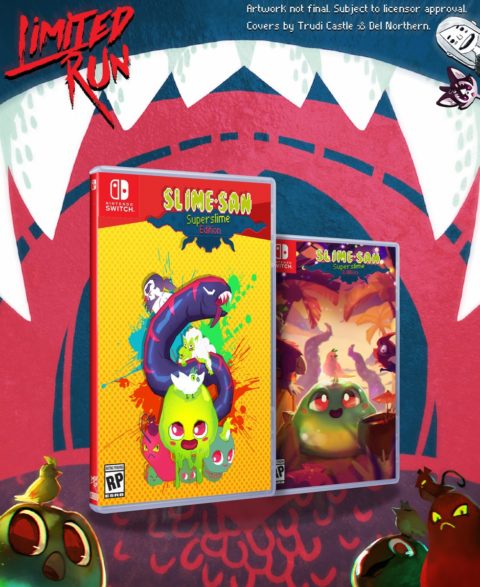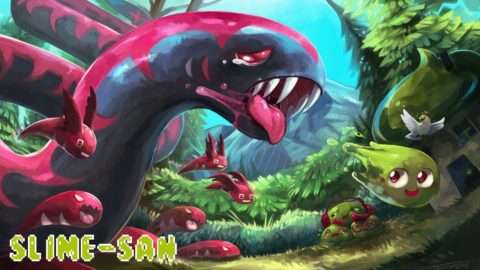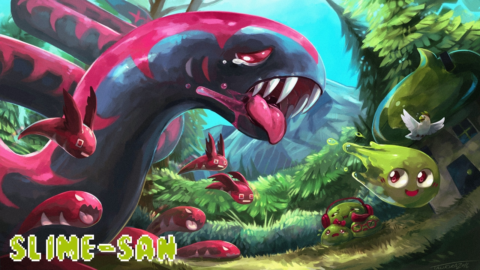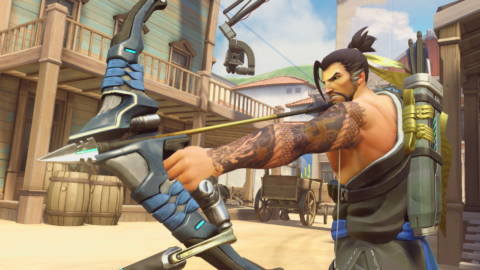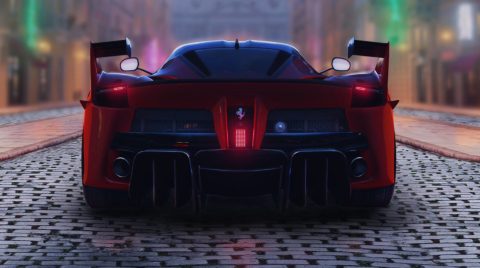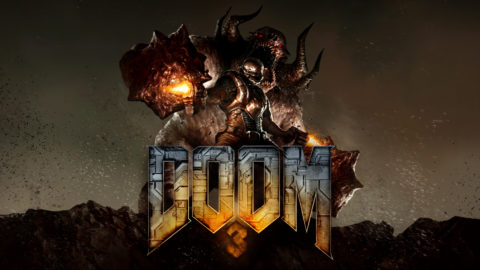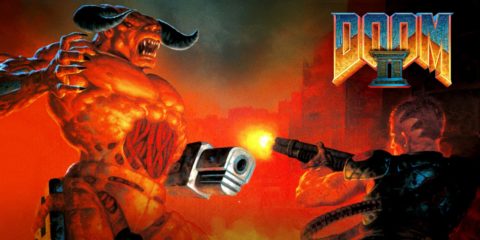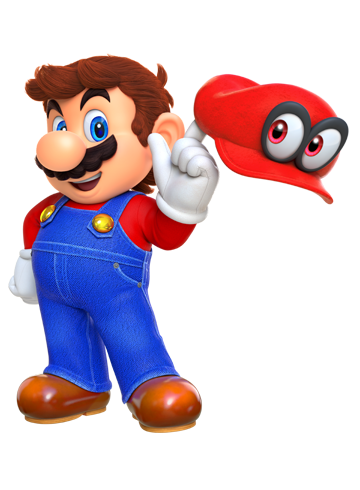
In the current indie ecosystem, it takes a lot to stand out. An appeal to nostalgia is no longer enough to stand above the noise and become something fans can truly latch on to. Pixel-art visuals, chiptune music, and retro-gaming references, if handled without care, do more to fade into the noise than to stand out.
When Slime-san released on the PC and Xbox in April of 2017, it had plenty of that kind of noise to cut through. By the time it came to the Nintendo Switch in August, it had done better than cut through. It had landed several awards and nominations from Gamescom to PAX.
With that much excitement, it’s easy to expect a lot from Slime-san‘s release on the Switch. After spending some time with the squishy hero and his feathered companion, it’s easy to say that excitement is well-founded.
World of guts and goo…and ramen shops
Slime-san certainly isn’t coy about its influences. As the title screen appears, pixelated curtains draw back to reveal a sparse palette of basic greens, reds and deep blues as a simple (but effectively repulsive) worm chases down a cute slime and his birdie friend.
The game’s art style isn’t exactly revolutionary, and it adheres pretty consistently to the expected traditions of retro-inspired 2D games. Characters are simple but identifiable, as are the stages. It’s simple but doesn’t distort or distract, revealing the artists’ understanding of how art in this style informs gameplay. This is even more crucial with Slime-san‘s choice of color. Green, white, and red on blue is typical, to say the least, but here it works to keep the player focused on Slime-san and the obstacles in his path.
The art style also lends itself well to the neon-sign world that stages Slime-san and Birdie’s adventure. Borrowing heavily from the look of Japanese city life, the worm’s guts are host to a sprawling metropolis of worms and other strange creatures. It’s a lot of world-building for a game with such little story, but it does wonders to make each stage feel alive.
Slime-san is about navigating stages, though, at its core. With 100 levels to navigate, each with 4 panels to jump, dash, and climb through, the potential for repetition is high. Happily, each level is delightfully unique, and the difficulty curve feels reasonable and consistent.
Make no mistake; Slime-san is not an easy game, but it does offer a nice ebb and flow of challenge throughout. After toppling one type of obstacle, the game gives players a break to warm up on simple versions of new traps before it ramps up again in toughness. It does this in a consistent way, so you never feel too far from mastering the death-defying stunts you’ll need to pull off to make your way through the giant worm to freedom.
There are bosses, too, that break up the pure platforming play of the primary stages. You’ll take on the worm’s major organs in these fights, reinforcing the sense that you have, in fact, been eaten by a monster. They also feature the classic “three hit” boss combat common to 2D action games, but each adds a puzzle element that forces you to climb and dash to find a weakness on your foe, then ramps up the pressure as you try to strike again and again.
All of this visual and contextual world-building would be lessened without a good soundtrack, of course. Here, Slime-san‘s presentation may shine brightest. The chiptune soundtrack is recognizable in its influence by early video game music but like many standout examples of modern chiptunes, it’s complex and immersive.
The game is acutely aware of what areas need certain tracks, also. Backing music for stages is driving and powerful, perfectly punctuating Slime-san’s quick dodge through each level. The menu music is simple and relaxing, a great counterpoint to the frantic gameplay. Music inside the Slumptown overworld adds to the feel of a thriving city, painting a sonic picture of packed streets and bustling businesses.
Dine and Dash

Navigating the myriad stages is the core challenge of Slime-san, so control is key. Slime-san and birdie have a few key tricks that allow them to get through each stage unharmed, primarily tried-and-true jumping and dashing.
Building on that classic base, Slime-san has the ability to climb walls, leaving a sticky green trail that allows him to cling and slide down surfaces. This gives the duo a lot more control, timing jumps to land between narrow hazards or giving players a short rest to observe the stage and react.
Dashes also reset Slime-san’s jump, and falling from ledges allows him to jump or dash in midair. Weaving these moves together provide a wide variety of quick ways to zip through each deadly gauntlet. Moves require a great deal of precision, which makes the sometimes unpredictable directional triggers a bit frustrating. While it doesn’t happen often, I sometimes found dashes going off in unpredictable directions thanks to thumbstick positioning, especially clinging to walls.
That said, it’s possible to build up some serious movement skill, and if you’re a fan of “speedrunning” games, Slime-san is likely to be a newfound favorite. A timer runs throughout the 4 panels of each stage, and it doesn’t slow down for anything, not even death. Slime-san can “phase” to move through green walls and effectively slow down time, allowing for more precise movement. Still, no matter what phase or how many times you meet your doom, the clock doesn’t stop until you reach the finish line.
Finishing within a set “trophy time” nets you…well, a trophy. It’s the kind of challenge clearly made for the most dedicated player, and you’ll need a few practice runs to build up reflexes quick enough to net these punishing time crunches. Still, the game accommodates speed runs in really impressive ways: deaths prompt instant panel resets, you can restart levels quickly without any tedious navigation, and hopping to the level select screen is practically a reflex action. You can practice to your heart’s content and barely lose any time fiddling with menus.
The controls do become awkward again in the menus, making it feel like porting from a mouse and keyboard scheme may cause some of these control issues. Speaking with NPCs requires a jump, which can slow down your move through Slumptown and test your patience in some minor ways. That being said, the game has plenty of settings to tweak, two of which let you tweak the default dash direction and allow you to speak with NPCs with the Up command instead. They’re small tweaks, but the buffet of settings helps the game feel more personalized.
All the trimmings
Slime-san rewards achievements well. Each panel contains an apple that takes a little bit of extra maneuvering to grab. The game stores any apples you collect within a stage to spend in Slumptown on useful customizations and cosmetic tweaks alike. You can buy other slime characters with unique playstyles, giving you longer dashes or higher jumps (with some trade-offs, of course.) Slime-san and Birdie can equip hairstyles and sunglasses to add a bit of flair to…well, escaping digestion.
You can even buy new side-panel art and screen filters, which can give your game a completely different feel. Filters like VHS tape, Game Boy, CRT, and Virtual Boy can put an entirely different spin on the game’s look. They’re well-done, too, and really capture the respective feel of each filter’s yesteryear inspiration.
You can even purchase multiplayer games from Slumptown’s “Akiha-worma” arcade. These require a different type of currency, though, which ties into some of the world-building within Slime-san‘s core campaign. Several stages throughout the game contain secret rooms, which are fairly easy to suss out but not always easy to reach (especially if you’re racing the clock or the rising red bile.) Finding these rooms will net you a coin, and introduce you to a new denizen you can send back to Slumptown permanently. It’s a subtle thing, but it does add a sense of purpose to your wandering through the worm; not only are you saving yourself, but you may be saving others trapped in the labyrinth of guts.
The multiplayer modes themselves are fairly straightforward and certainly feel like an addition rather than a well-developed co-op mode. The three available games nod toward arcade classics like Pong and Galaga, and you can play alone or with a friend. It’s a great side-game option for the Switch in particular, where you can easily jump to the arcade and hand a controller to a friend. Still, it’s nothing more than an add-on, and barely a distraction from all else that Slime-san has to offer. For how inconsequential these modes are, it’s a bit disappointing how difficult it is to unlock them all; you’ll need to play through the entire core game at least once to collect the cash to buy them. That assumes, of course, that you find all the hidden rooms in the first go.
Final Thoughts
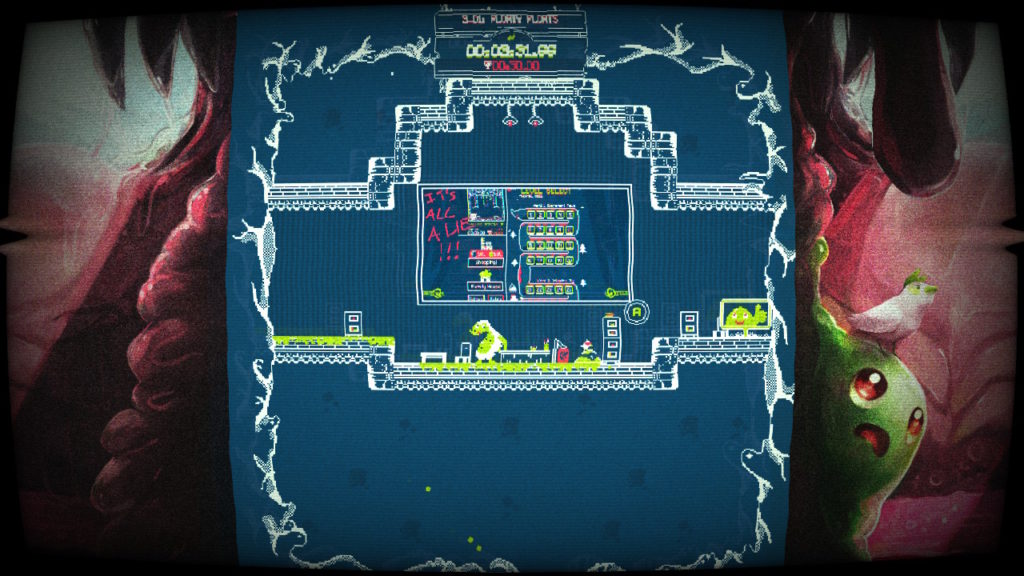
Slime-san is, simply put, an absolute joy from start to finish. It has just the right balance of lighthearted, quirky attitude and skill-based, precise gameplay to push it well ahead of the bulk of the indie game scene. There’s a real challenge here, too, without resorting to the intense punishment of the roguelikes or Dark Souls hopefuls so common in the indie scene right now. Speedrunners and hardcore platformer fans will find plenty to love here, but it should still appeal to the casual fan looking for something a little different to add to their Switch library.
It’s easily accessible playstyle and unique look connects it perfectly to the Nintendo Switch’s core fan base. It’s perfect for a few quick rounds in handheld mode but has enough depth and length to invest in for an evening at home in front of the TV. While the Switch version doesn’t offer any new features or improvements over the PC and Xbox options, the low price point ($11.99 on the eShop) and the versatility of the Switch might just make this the preferred platform for a game like Slime-san.
